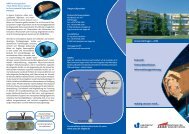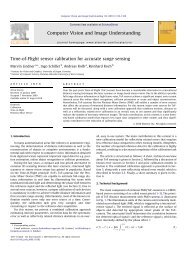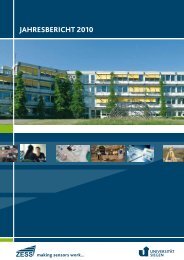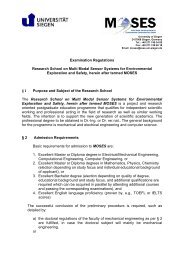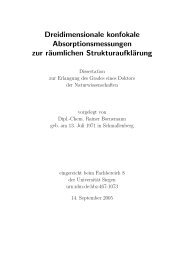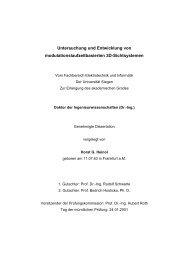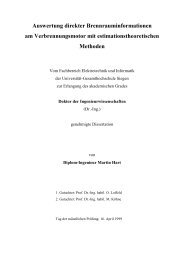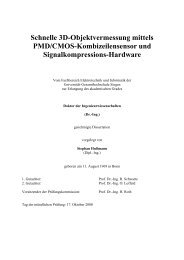Online Publikation - im ZESS - Universität Siegen
Online Publikation - im ZESS - Universität Siegen
Online Publikation - im ZESS - Universität Siegen
Sie wollen auch ein ePaper? Erhöhen Sie die Reichweite Ihrer Titel.
YUMPU macht aus Druck-PDFs automatisch weboptimierte ePaper, die Google liebt.
Summary<br />
Metabolic modeling has become a major activity in metabolic engineering in recent<br />
years, in order to understand the complex regulation phenomena in a living cell. In<br />
this thesis, a versatile tool has been developed to support a modeler with the setup and<br />
refining of a model, that s<strong>im</strong>ulates the data extracted from a rapidly sampled st<strong>im</strong>ulus<br />
response exper<strong>im</strong>ent.<br />
In the course of the modeling process, the modeler is typically not only concerned<br />
with a single model but with sequences, alternatives and structural variants of models.<br />
Supporting the modeling process of dynamic biochemical networks based on sampled<br />
in vivo data requires more than just s<strong>im</strong>ulation. For this purpose, the new concept of<br />
model families is specified and <strong>im</strong>plemented in this thesis. With this concept, a multi-<br />
tude of s<strong>im</strong>ilar models can be formulated in a single description by using network and<br />
kinetic variants The concept allows to automatically navigate in the space of models<br />
and to exclude biologically meaningless models on the basis of elementary flux mode<br />
analysis.<br />
An incremental usage of the measured data is supported by using splined data in-<br />
stead of state variables. Powerful automatic methods are then required to assist the<br />
modeler in the organization and evaluation of alternative models.<br />
This tool has been developed as a computational engine, intended to be built into<br />
a tool chain. By the use of automatic code generation, automatic differentiation for<br />
sensitivity analysis, and Grid computing technology, a high performance computing<br />
environment is achieved. It supplies XML model specification and several software<br />
interfaces.<br />
The performance and usability of the tool of this thesis is illustrated by several ex-<br />
amples from ongoing research projects. An opt<strong>im</strong>ization algorithm was developed,<br />
enabling the software tool to automatically carry through the tasks of model variant<br />
switching and parameter fitting. The computation results into a ranking of models va-<br />
riants fitting best to the exper<strong>im</strong>ental data.



